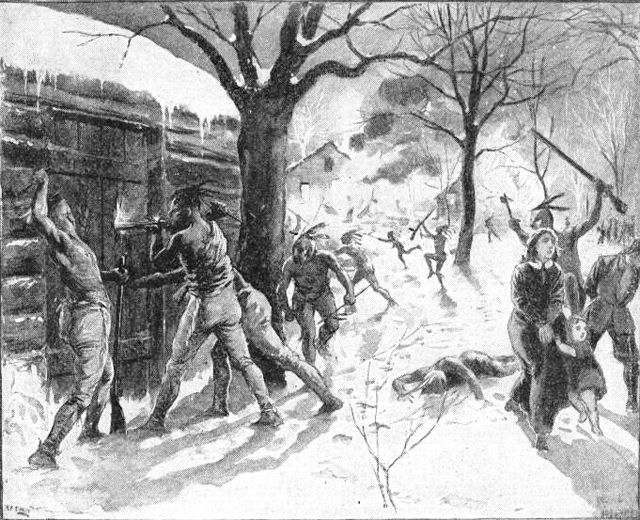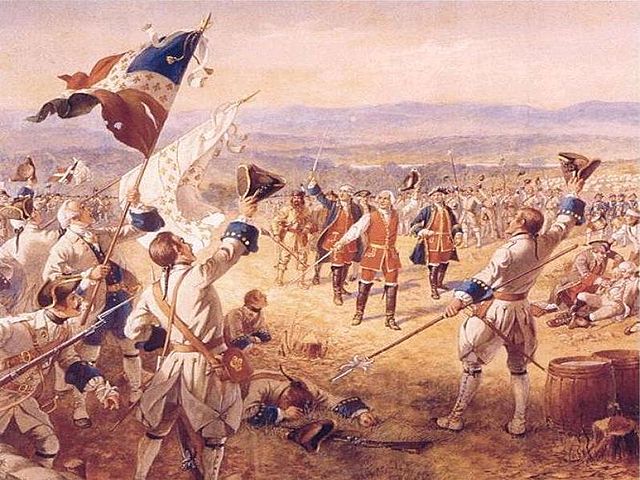Queen Anne's War (1702–1713) was the second in a series of French and Indian Wars fought in North America involving the colonial empires of Great Britain, France, and Spain; it took place during the reign of Anne, Queen of Great Britain. In the United States, it is regarded as a standalone conflict under this name. Elsewhere it is usually viewed as the American theater of the War of the Spanish Succession. It is also known as the Third Indian War. In France it was known as the Second Intercolonial War.
Stone fortifications of Port Royal, Acadia, 1702. Few settlements had stone fortification at the start of the war.
Pierre Le Moyne d'Iberville sought to establish a relationship with native people in the Mississippi watershed as a result of the last war with England.
New French raid on Deerfield, Massachusetts, in February 1704
Hendrick Tejonihokarawa, a Mohawk chief, was successful in gaining support from Anne, Queen of Great Britain, to launch an expedition to take Quebec City.
The French and Indian Wars were a series of conflicts that occurred in North America between 1688 and 1763, some of which indirectly were related to the European dynastic wars. The title French and Indian War in the singular is used in the United States specifically for the warfare of 1754–63, which composed the North American theatre of the Seven Years' War and the aftermath of which led to the American Revolution. The French and Indian Wars were preceded by the Beaver Wars.
Fort Carillon controlled the portage between Lake George and Lake Champlain.
At Carillon the French won a rare victory in a battle fought according to European tactical doctrines.






